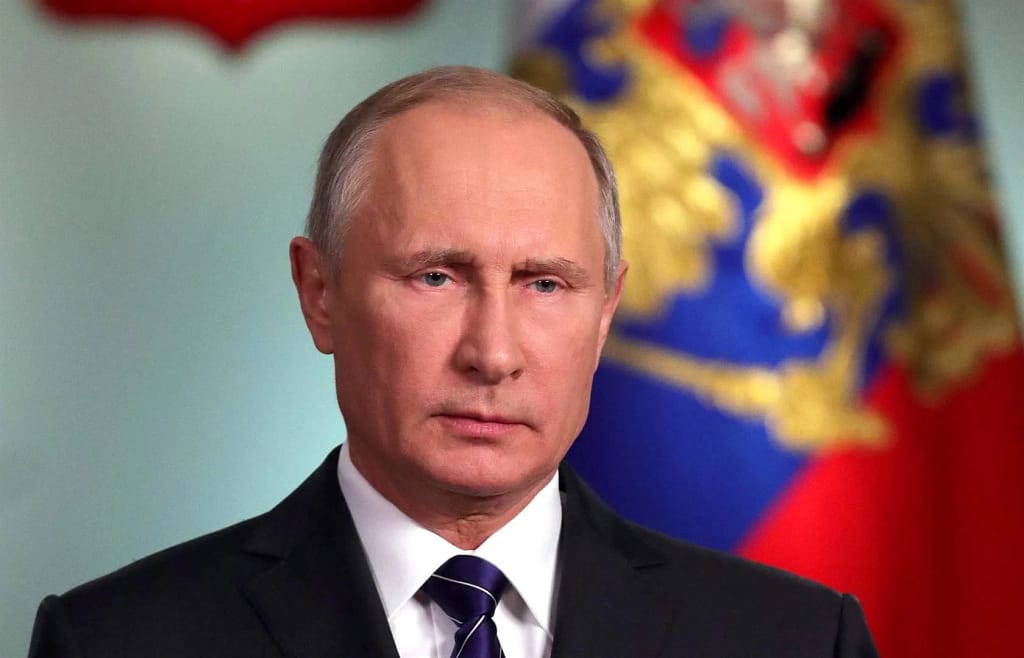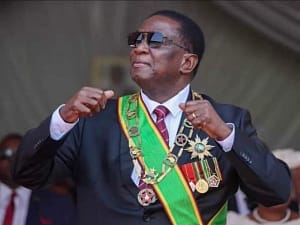Food shortages could lead to more riots

Vladimir Putin
Serious riots and protests could soon break out in Southern Africa due to the looming food shortages as a result of the ongoing conflict between Russia and Ukraine, experts warn.
The war has already caused the fuel prices to rise sharply and curtailed exports of staple commodities such as wheat and sunflower oil.
High transport costs and shortages of these products have pushed up food prices.

Judy Smith-Höhn, director and researcher at Tutwa Consulting, says food insecurity and sharp rises in food prices go hand in hand with social unrest, especially in the developing world including Africa, where households spend a much larger share of their income on food.
High food prices and shortages in the past triggered uprisings and protests in France, Russia and parts of the Middle East.Sky-high food prices were also one of the drivers of the Arab Spring, when violent uprisings broke out in Muslim countries in North Africa between 2010 and 2012.
This led to the overthrow of governments in Egypt and Libya.
South Africa is no exception, says Smith-Höhn, “especially if you bear in mind the July looting last year and now the floods in KwaZulu-Natal”.
Shopping malls and warehouses were smashed in parts of Gauteng and KwaZulu-Natal when some residents broke in and looted food, clothing and electronic equipment.
The IMF also warned last week that the war in the Black Sea region could lead to social tensions. Director of the IMF’s Africa Unit, Abebe Aemro Selassie, said:This crisis comes at a very difficult time. The Covid-19 pandemic is in its third year and countries’ fiscal and international buffers are under great pressure. There is little room for policy change.
The IMF is particularly concerned about sub-Saharan Africa’s ability to cope with the extra shock of high inflation and possible food shortages.
“Countries that export oil will be better off, but the trade balances of the other 37 countries (in the region) will weaken and the cost of living will rise.”
The IMF says 11 countries in the region can expect double-digit inflation this year.
On top of that, there are fears that wheat exports from Russia and Ukraine may soon dry up completely.
READ: How organisations perpetuate patterns of inequality: A South African case study
Several countries on the continent are highly dependent on Russia and Ukraine for wheat in particular. If these exports are stopped completely, there will not be enough stock to meet consumer demand.
Together Russia and Ukraine account for 29% of world wheat exports and 62% of sunflower oil.
According to the Bureau for Food and Agricultural Policy, South Africa imports about 30% of its wheat from Russia and Ukraine. Oxford Economics Africa said in a research paper last week that wheat exports from Russia would probably not come to a complete halt, but if ports in Ukraine ceased to function wheat could not be shipped.Egypt, Nigeria and Tanzania in particular will be hit the hardest if wheat exports from the two countries are stopped altogether.
In such a scenario, South Africa, Kenya, Tunisia and Ghana will also not be able to meet the needs of their own populations for wheat consumption.
Donald MacKay, founder and CEO of XA International, says developing countries will in all likelihood soon have to cope without the help of richer countries that are spending more and more money to build their armies. Says MacKay:Capital will also be used to help refugees from Ukraine and to rebuild infrastructure in that country. This diversion of funds will also be felt in Africa – which has been a beneficiary of Western aid for many years.
According to MacKay, the world is likely to be faced with the same kind of division that prevailed during the Cold War. He predicts there could be two trade blocs: the “democratic countries”, such as Western Europe, the US, Japan, Australia, New Zealand and Ukraine on the one hand and “autocrats” such as Russia, Belarus, India and (perhaps) China on the other.
However, China’s place in a divided world is still a mystery, says MacKay. “In the trade relationship between China and Russia, China is the senior partner. Will China, which has strong trade ties with the West, want to incur the anger if it joins Russia?”
African countries have so far taken a neutral stance on the war, but the continent will eventually be guided by China’s stance.
“The question is how Africa’s neutrality will ultimately affect its trade relations with and aid from the West,” says MacKay.
Since Russia invaded Ukraine on February 24, South Africa has refrained from condemning Russia for invasion of Ukraine and maintains a peaceful settlement between the two countries is the only way out.
Says MacKay: “This attitude can sour our trade relations with the West in the long run.“Our interaction with the EU and the US has been unnecessarily aggressive at times. We do not treat them as trading partners, but rather as lenders of money to which we are entitled.”
Although the EU is not likely to repeal the current Economic Partnership Agreement very quickly, South Africa may struggle to negotiate favourable export quotas for some of its products.Russian debt default may not be severe for SA – analystsIf Russia defaults on its debt, as is widely predicted, this will not simply trigger a debt crisis in all emerging markets, as has happened in the past, says David Rees, a senior economist at Schroders, an international asset manager.
Even though the US and its allies have imposed drastic sanctions on Russia and frozen the country’s central bank reserves abroad, it has so far been able to avoid default.
But the risk is growing. Because Russia does not have access to its foreign reserves, it was forced to pay the holders of its international government dollar-denominated bonds in roubles. Such a step can technically be regarded as a non-payment.
George Herman, head of investment and director at Citadel, explains: “If you lend me R100 and I buy you a bunch of flowers as a repayment, I will not be sticking to the original agreement. This would be considered a default.”
Historically, debt defaults have led to a domino effect and countries have “infected” one another, sparking a series of defaults.
In the 1980s, for example, there was a crisis of defaults when Saudi Arabia lent large sums of money earned during the energy boom to South American countries. The loans were dollar-denominated and were at a fixed interest rate, says Rees.
“But when the Federal Reserve started raising interest rates to try to curb inflation, the dollar rose sharply. The debt service costs were too high for those countries.”
A series of defaults and a collapse of their economies followed.
Today things are different. Russia’s default will be due to the sanctions rather than economic problems. And other countries in emerging markets are not as vulnerable as in previous regional debt crises. “On the contrary, countries in emerging markets have been resilient in recent months and have proactively raised interest rates to shield themselves from international shocks,” Rees adds.
The economies that do run the risk of getting into financial trouble are those whose short-term foreign debt exceeds their foreign reserves, such as Sri Lanka, Tunisia, Belarus and Argentina, says Rees.
However, emerging markets could be indirectly affected if Russia defaults.
Emerging markets are inter-linked – they have close trade relations and what happens in one country has an effect on others, says Herman.
Investors also view emerging markets as homogeneous. For example, when the Federal Reserve talks about sharp interest rate hikes – like now – and Russia defaults, this can sour investor sentiment towards emerging markets and lead to capital outflows. This is particularly detrimental for countries with cash flow problems due to their debt-to-reserves ratio.
However, Rees says South Africa is not at risk. “South Africa’s foreign debt is 50% of its foreign reserves. It’s sizeable, but you see a crisis if external debt as a percentage of reserves is around 150% and 200%.”
The continued commodity boom has also benefited South Africa in terms of its trade balance and the economy is, to some extent, shielded against external shocks such as the sharp increase in inflation experienced around the world.
“Things are not quite as negative in South Africa as in the developed world, but our Achilles heel is that we cannot grow above 1.5%,” says Herman.
The sharp decline of the rand against the dollar since Easter Monday is also a factor in the country’s inability to generate growth.
“This is not taken into account in the daily, weekly and monthly movements in the exchange rate.
“So the currency makes these leaps due to events not necessarily linked to South Africa, like when the dollar strengthens dramatically due to rate hike expectations,” says Herman.
The rand continued to strengthen in the first three months of this year and at one point traded at R14.40 against the dollar.
However, it has now lost 9% of its value over almost two weeks and dropped back to levels last seen in March 2020 when Covid-19 broke out, André Botha, senior currency trader at TreasuryONE, said in a company note. – Liesl Peyper
–-City Press






